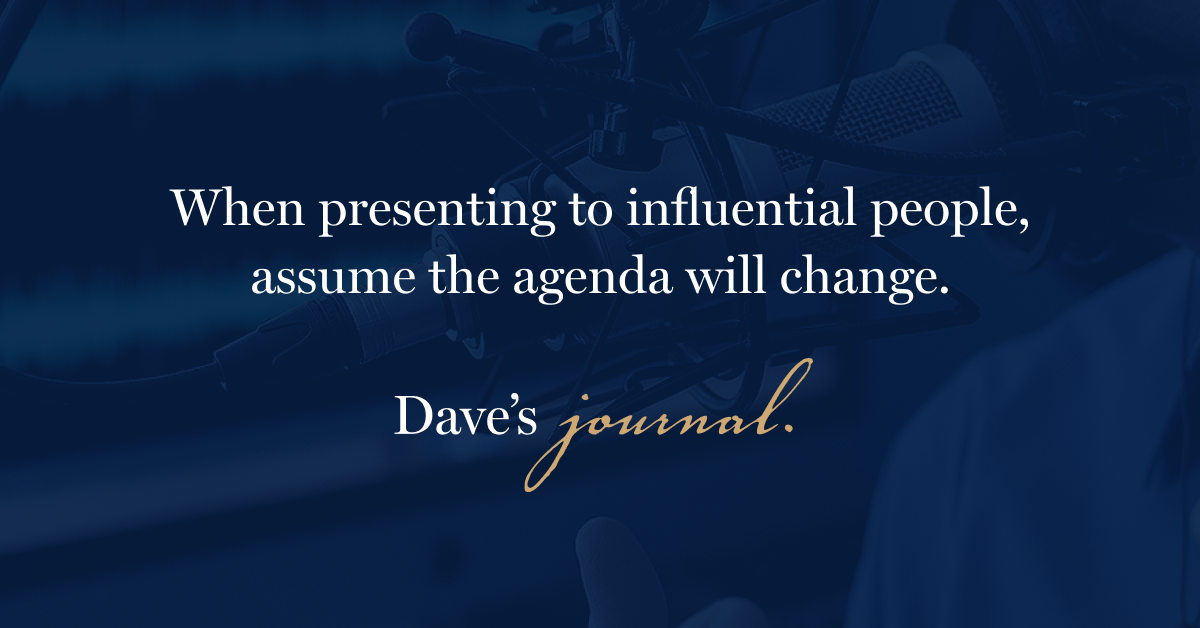Over a decade ago, I arrived for a client presentation on a Friday afternoon. I’d contracted with the client for an hour in front of his team and had prepared an extensive series of exercises to teach several communication skills.
I was a bit skeptical we could achieve the stated objectives in a single hour, but had agreed to the abridged timing to help him out. There were a number of logistical constraints that made other options impractical.
The meeting kicked off and my client got in front of the room to introduce me. Before he did, he addressed some company news that happened earlier in the day.
I’ve long since forgotten the news, but I recall exactly what happened next.
Questions. Lots of them.
Ten minutes into the hour, the questions were still coming.
I frantically starting re-arranging the outline in my head, assuming I’d perhaps have only have 45 minutes. I removed an entire section, trimmed my opening, and quickly re-thought the summary.
My client made eye contact and nodded to me, indicating he knew he was bleeding into my time. Yet, it was clear from his team’s response that he needed to address the reaction immediately.
Five more minutes of questions. I trimmed even more.
My client finally started introducing me, seemingly satisfied he’d addressed the immediate issue…
…only for someone else to bring up a related problem that generated even more questions.
When I finally got introduced, I had 24 minutes to achieve objectives I had been skeptical about doing in an hour. Adding insult to injury, I was mentally exhausted, having just spend almost 40 minutes feeling panicked at the back of the room.
I learned a valuable lesson that day:
When presenting to influential people, assume the agenda will change.
No, my client wasn’t good at managing a meeting agenda. No, it wasn’t fair to have to rewrite my presentation half a dozen times. But here’s the thing:
Nobody cared.
The two dozen people in the room didn’t know that I’d been promised an hour. Even my client, aware that he had gone into my time, later described it as “just a couple of minutes.”
He wasn’t trying to be difficult. On the contrary, he was a great ambassador for our work and had opened up tons of doors for us for in both past and future projects. Like a lot of executive leaders, he simply had too much on his mind and no concept of how much he was talking.
Rewriting my agenda at the back of the room was, ironically, some of the best presentation training I ever had. Going forward, I almost always had multiple versions of any presentation or briefing ready for a client or executive team. I discovered that the more influential the audience, the more likely timing will change with little or no warning.
Are you showing up to serve, or to be served?
If you have the privilege to present to an influential audience, it’s not about you. You’re there to serve them.
Decide what the audience needs to hear — and have several timing paths prepared to get there. If you can adapt on the fly, a few minutes in front of an influential audience may be worth more to your career than a year behind your desk.





